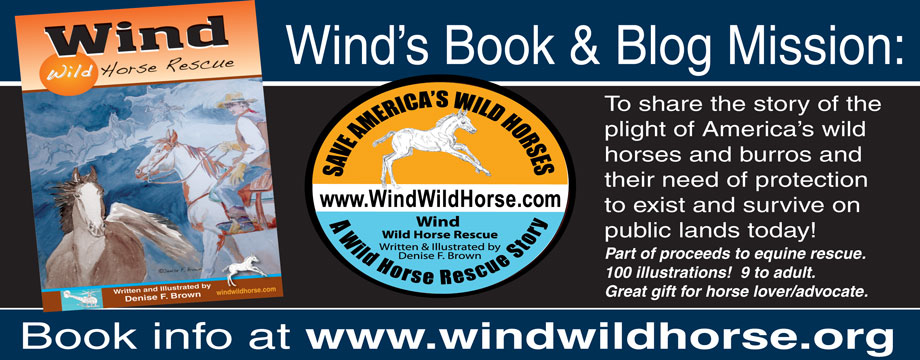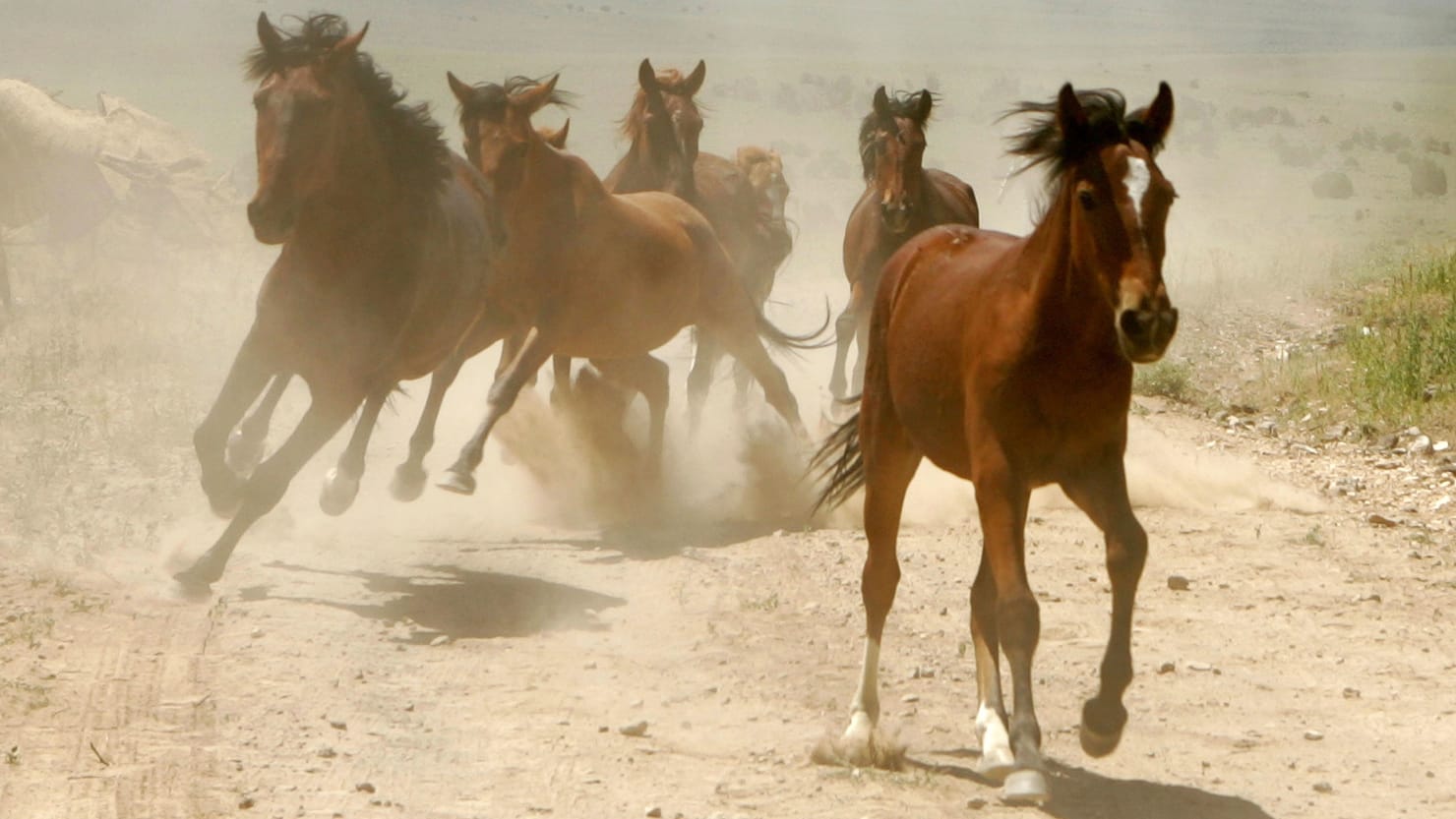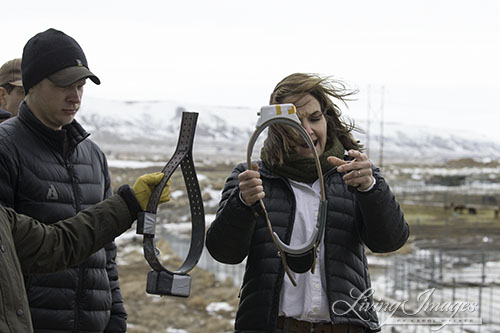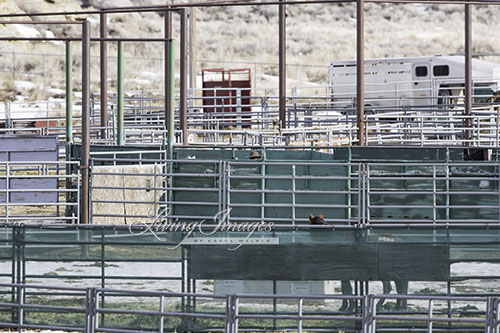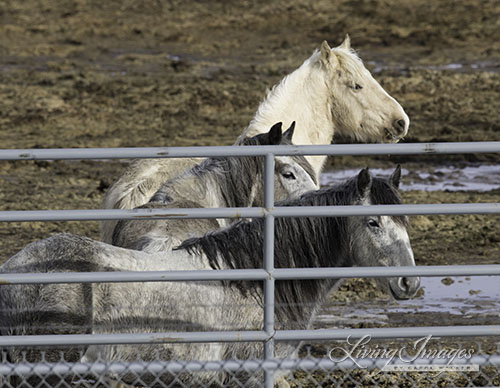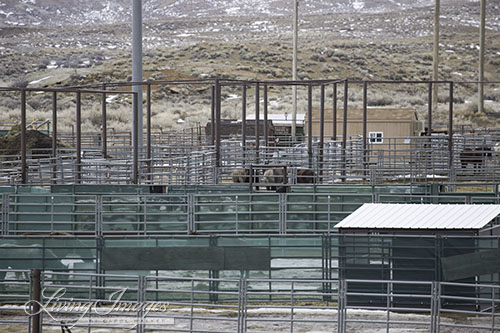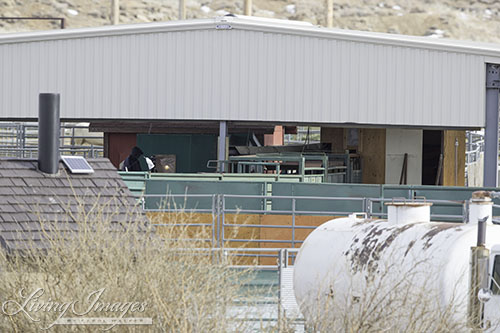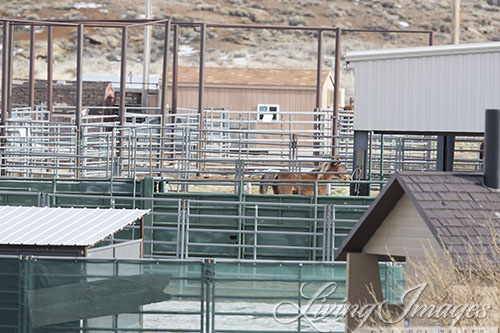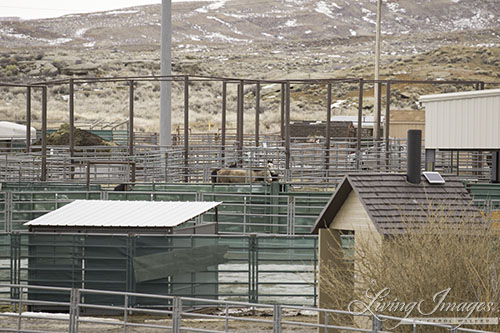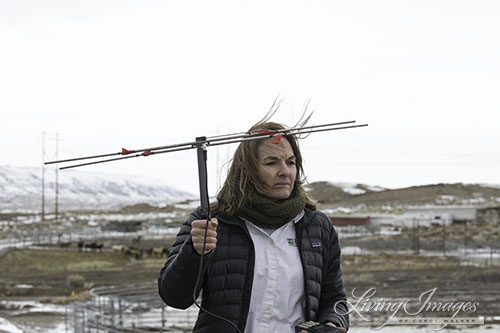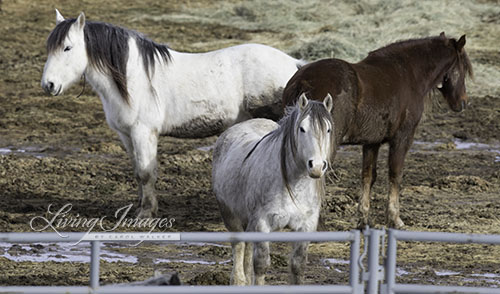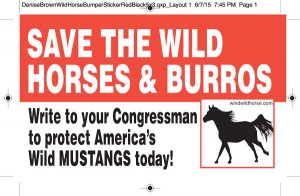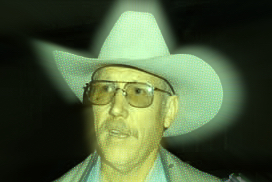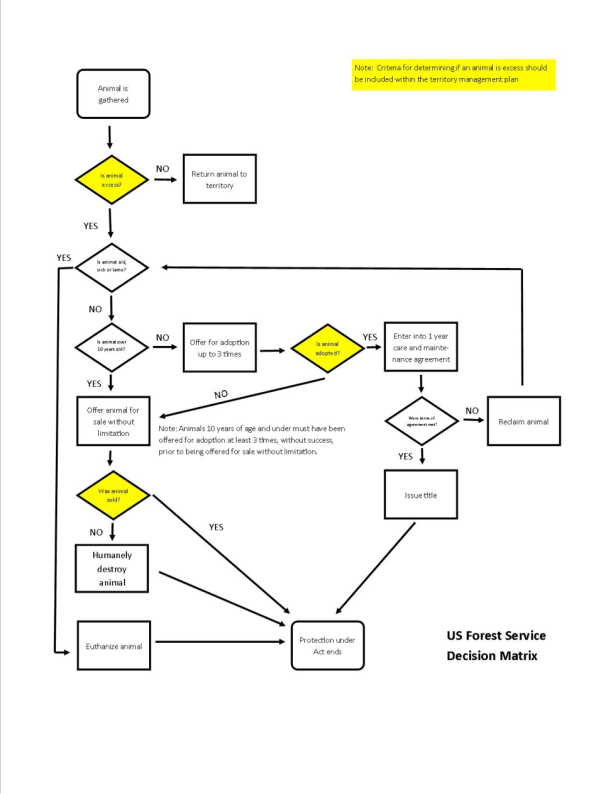Mustanging
The best film ever made about wild horses was The Misfits, which was released in 1961 to critical acclaim and box-office failure. Arthur Miller, who wrote the script, based it on a short story he published in Esquire about Nevada cowboys who freelanced in the backcountry wrangling the obstinate animals and selling them to slaughterhouses that ground them up and marketed them as pet food and chicken feed. This practice, a long tradition in the West, was called mustanging, after the Spanish word for wild horse, mustengo, which means, variously, stray horse, ownerless beast, a beast that is the property of no one. Mustangers had other names for the horses. They called them range rats, range roaches.
Clark Gable is the mustanger in the film, an old busted cowboy on his last ride with a retinue of misfit buddies—lonely, unhappy alcoholics scarred by family deaths, bad gambles, hopeless desires. Naturally they all fall for Marilyn Monroe, a recent divorcee in Reno’s haven of broken marriages. The drama culminates when Gable and the guys, booze-sodden and reckless, show the golden girl what it means to be a man on the range in the outback of the horse basins. A plane piloted by one of Gable’s pals races out of the sky behind the maddened animals. Gable in the back of a speeding pickup ropes the horses, necklacing them with car tires, exhausting the beasts into collapse in the crushing summer heat.
Monroe in the end can’t take it. “Horse killers! Killers! Murderers! You’re liars! All of you, liars! You’re only happy when you can see something die! Why don’t you kill yourself to be happy? You and your God’s country! Freedom! I pity you!” And the old mustanger, moved beyond words, releases his captives. The physicality of the shoot was so extreme that Gable, in the last film of his career, suffered a heart attack and died days after the final scene wrapped.
That was 1961, the view from Hollywood. Mustanging came to an end ten years later because of the work of Velma Johnston, a rancher’s daughter from Reno who was aghast at the treatment of the animals. One day she found herself behind a truck of dying captured horses, their blood streaming from the flatbed, and it set her off.
In the ’50s, Wild Horse Annie, as Johnston came to be known, began a campaign of letter writing and lobbying that took decades to bear fruit. This was not an easy thing for a woman who was physically frail, deformed by childhood polio.
“Of all living things that have played their part in the development of this country,” she testified before Congress in 1959, “the horse has played the most prominent and beneficial role. The real need for his strength, speed, and endurance is passed, but as nothing else can, he portrays the West as all people like to think of it; he is a symbol of wild freedom to us all.”
When Congress passed the Wild Free-Roaming Horses and Burros Act in 1971, outlawing mustanging and protecting the ownerless beasts as “living symbols of pioneer spirit,” the legislation was effectively written by Wild Horse Annie.
But the law failed to work as she had imagined, because Congress handed oversight to the Bureau of Land Management. There was no agency in the U.S. more inimical to wild horses. From its inception in 1946, the BLM, assigned to regulate huge stretches of the public domain in the West, had mostly served livestock interests. It was a cowboy-captured agency, its chief purpose to make grass available for cattlemen. In the grazing districts managed by the BLM, the district regulators were the sons, brothers, grandsons, cousins, or old friends of the ranchers they regulated.
Bernard Shanks, author of This Land Is Your Land, wrote about “BLM cowboys” who donned “rodeo belt buckles, western shirts complete with a can of Copenhagen in the pocket, well-worn cowboy boots,” and who deferred always to what Shanks called “the regional landed aristocracy.” The aristocrats, fattening their cattle on the public domain for private gain, did not cotton to the idea of sharing grass with horses, as Johnston’s law dictated. And they did not like that Johnston had outlawed mustanging: No more money from grinding the range rats into pet food. Johnston had committed the unforgiveable offense of taking away a piece of the ranchers’ livelihood, the horse as harvestable commodity on the range. Death threats followed her the rest of her life.
The BLM had to serve its cowboy constituency but at the same time appear in compliance with the 1971 law. As bureaucracies are wont to do, the agency conjured an army of acronyms to deal with the problem. It created “horse management areas” (HMAs), where the “free-roaming” animal lived in a not-so-free manner, behind blocks of fencing and at populations determined by a rubric called “appropriate management level,” or AML.
Appropriate management level is the number of horses that the BLM claims the range can sustain in terms of available grass and water. The National Academy of Sciences found in 2013 that the AML system has never been based in scientific understanding of the actual needs of the animals. AML is determined by the needs of cattlemen, because in every horse management area there are cattle, often by the thousands, vastly outnumbering horses. And the cattle are allotted the majority of the forage, leaving horses to survive on a pittance.
From the moment they were protected, the horses were never given a square deal on the landscape. Still, they have thrived, multiplying at a rate of 12 to 15 percent a year, because they are extraordinarily tough. Wild horses can drink water once a day and do well. They can eke out nutrition from a near-starvation diet. “They’re what in the horse world we call an easy-keeper,” Leigh said. “An Arabian requires oats, high-calorie hay, big sumptuous meals. Not these horses. These aren’t pampered little purebreds.”
Their numbers have gone up steadily, the population in the wild estimated today at between 45,000 and 70,000. (According to the National Academy of Sciences, the BLM does not maintain accurate figures, as its horse survey methods have been flawed for decades.) With the growing population, new opportunities arose to make money. Barred from slaughtering the horses, the BLM created what Leigh called the “capture-and-hold industry.” When horses on the range surpass appropriate management level limits, the BLM hires private contractors for the lucrative work of rounding them up. In 2013, the last year for which statistics are available, the agency paid $8 million in fees to contractors conducting these round-ups. The big money, however, is in warehousing the horses post-round-up. The BLM in 2013 spent $38 million on private contractors that run holding facilities. These facilities included, for example, one owned by the J.R. Simplot Company in Idaho. J.R. Simplot, corporate rancher, potato king, supplier to McDonald’s for its French fries, Forbes’ 89th richest person in the United States upon his death in 2008, got his start mustanging as a young man and later pivoted into the business of horse holding.
The peculiar population dynamics in a constantly disturbed herd happens to benefit the capture-and-hold industry. Because animals are targeted at random in round-ups, the complex web of family and harem ties that regulate breeding is shattered. The herd goes crazy with sex, reproduction rates jumping as much as 25 percent in the wake of roundups. More round-ups thus produce more horses—which necessitate more round-ups, and also more horses in holding, for a continual flow of cash to private contractors. It could be said that horses are managed now as a renewable crop of captives. Currently there are 60,000 animals in captivity.
In 2009, horse advocates, including Laura Leigh, proposed a broad fertility control program in Nevada similar to the experimental program at Onaqui. It would have involved darting tens of thousands of mares over a vast terrain for a period of several months—an enormously greater job to tackle than the 40 mares regularly darted at Onaqui.
Leigh suggested developing a pilot program among horses in a section of public land called Fish Creek, in the wild expanses of Nevada’s Eureka County. Fertility control in the Fish Creek Horse Management Area was briefly implemented and then shut down. No one in the business of wild horse management—not the contractors and not their friends in the BLM—wanted any working alternative to capture-and-hold. As Leigh put it to me, “If I was allowed to show we can dart in a large population and in a few years we had populations stable? No multimillion-dollar industry.”
Cowboy corruptions
In April 2017, Leigh got a call from the office of Sen. Dick Durbin (D-Ill.), who was curious about wild horse management in Nevada. “What are the issues facing horses there?” a staffer asked.
The first thing to understand about the situation in Nevada, Leigh replied, is the extent of the capture of the BLM by the livestock industry. “The BLM has been corrupted by cowboys,” she told the staffer. And the Nevada BLM was the most cowboy-corrupted of all.
Durbin was intrigued. But his committee assignments had him trapped in the daily chaos of the Trump administration with no time to spare, and he admitted as much. Leigh then reached out to Rep. Raul Grijalva (D-Ariz.). Grijalva put her in touch with investigators at the House Natural Resources Committee (HNRC), where he is the senior ranking minority member, and said he would consider opening an inquiry into the politics of public land in Nevada.
Among the issues Leigh discussed with investigators was whether BLM officials in Nevada violated ethical codes by pressuring personnel at the behest of livestock ranchers. They were particularly interested in the story of a brave BLM employee named Doug Furtado, 47, the manager of the 10.5-million-acre Battle Mountain district in central Nevada. Leigh had gotten to know Furtado over her years of advocacy and while working as a volunteer at Battle Mountain, which oversees more wild horses than any other BLM district. With Furtado’s help, she had attempted to put together the fertility control program in the Fish Creek HMA. Furtado “wanted to do the right thing at Fish Creek,” Leigh said. “He was one of the good guys. And BLM crushed him.”
I met Furtado in 2014 while on assignment for Harper’s Magazine. He did not look the part of the BLM cowboy. He wore a baseball cap and hiking boots and a goatee. Harper’s had contracted me to write about the West’s cattle-beaten public lands, and Furtado was the only district manager in Nevada who would go on the record to discuss the problem. In the Battle Mountain district, two years of unprecedented drought and a surfeit of cows had resulted in a landscape of invasive weeds, dried up streams, soil eroding and turning to dust—what ecologists call a depauperate ecosystem. As we drove together one day, Furtado shook his head at the sight. “No longer habitat for anything,” he said.
In 2014, Furtado had taken a hard stand against the livestock ranchers who held permits to graze in a section of the Battle Mountain district known as the Argenta, one of the areas worst-hit by the drought. Furtado demanded the Argenta permittees reduce the cow numbers to let the land recover. The permittees considered it an unconscionable move and refused to comply. They called for his firing. They held rallies at the BLM’s Battle Mountain office. They honked their horns outside Furtado’s home nearby, hurling curses. There was a petition at the local hardware store to “impeach” and “oust” him. There were physical threats.
Before meeting with Furtado, I visited his mentor at the BLM, Gerald Smith, who retired in the town of Battle Mountain after 35 years with the agency as a rangeland conservationist. Smith’s final post was manager of the Battle Mountain district until 2010, when Furtado took over.
Smith, like Furtado, was an outlier, and he had tangled repeatedly with pissed-off ranchers. “These folks in Battle Mountain, I swear to God, think they’re living a hundred years back,” he told me. “It’s ingrained that they think it’s their land, not the public’s, not the wildlife’s. And they really don’t give a rat’s ass about the conditions of the range.”
Smith had tried over the years to institute measurable limits on grazing, and had met with such fierce resistance that he had mostly failed to accomplish his goals. He and Furtado like to hunt birds together in the uplands. “It’s bad these days,” Smith told me. “The birds can see you coming for 300 yards, there’s just no cover. I see deer that are starving because there’s no forage. This whole fight is about leaving something on the land for other creatures than cows.”
Battle Mountain is a small place, pop. 3,600, an isolated outpost in the desert. It has four bars, a brothel, and no stoplight. It bears the unfortunate title of “armpit of America,” a designation bestowed by a cruel joker journalist at the Washington Post. In such a place, where the ranching culture dominates, the aloneness that Furtado felt was probably overwhelming. He worried about his hunting dogs, Brittany spaniels, as BLM employees in the past had seen their dogs poisoned by angry ranchers. He told Leigh that if something happened to him he wanted her to take the dogs.
The ranchers brought their plight to the local press, citing Mahatma Gandhi as the model of resistance. They organized a “grass march” that they said was a reprise of Gandhi’s Salt March of 1930. The imperial government in India had maintained a punishing monopoly on a vital resource, said the ranchers, and the BLM in Battle Mountain—by which they meant Doug Furtado—held the same monopoly on grass.
Leigh had some sense of what he was going through. “I meet a lot of people when I’m on the road with the horses, primarily the transients that work in the American oddity that is Nevada,” she told me. “There’s this one older guy who works for a mine near Battle Mountain who I’ve seen on and off over the years. He knows what I do and reads about me in the paper, sees me drive in with a jacked-up F250 and head into motels covered in dust carrying a camera. He said something I thought was both funny and tragic, something like, ‘If you were a man you’d be a George Clooney of the range. You’d be sought after and listened to by everyone. But because you are a woman, you are just plain scary and people probably think you’re crazy.”
When she got cancer, in 2013, her children were grown and gone, and she was strapped for money, living out of hotel rooms and in her pickup. She had no one to help her. She did the radiation treatments, the surgeries. She wore a drain, a suction tube hanging out the bottom of her shirt, filling with blood and ooze. She refused to sit in bed. She wanted to be out on the range doing her job. The doctors warned her of the risk. In the summer of 2014, she collapsed in the desert from sepsis. Her kidneys shut down. She spent three weeks in recovery and then she was back out with the horses. The doctors came to agree with the old miner: she was crazy.
Furtado was one of the few people she had told about the cancer. “When I was diagnosed, he always called to ask how I was,” Leigh said. “When I had gotten out of my eighth surgery in two years and I was scared, afraid I wouldn’t wake up from the anesthesia, and I had told Furtado this, he said, ‘You’re going to be fine.’ It was a simple human kindness at a moment when I needed it. And he would call me when he was sitting at home and people drove by his house, honking and yelling. He felt trapped.”
The Argenta fight occurred at a fraught moment for the BLM, following the Cliven Bundy debacle that had unfolded during the spring of 2014. Bundy, a rancher in southern Nevada, had gathered around him several hundred armed militiamen who, on national television before a transfixed public, aimed their rifles at the BLM and forced the agency to abandon its attempted removal of his illegally grazing cattle. The BLM wanted the trespassing animals removed for the same reason Furtado wanted the Argenta herds removed: their trampling hooves were wreaking havoc on fragile ecosystems. Federal law said the land’s health had as much importance as the stockmen’s permits to graze, and Furtado was set on following the law.
Targeting the Argenta ranchers, as Furtado was doing, raised fears in the BLM leadership of a similar armed uprising against the Battle Mountain office. And the Argenta ranchers had learned the obvious lesson from the Bundy affair: Terrorize the BLM, and the agency would stand down, effectively abandoning its duty to protect the public’s environmental interest on the public domain.
Leigh watched all this from the inside at Battle Mountain, working as a volunteer on the nascent fertility control program she was developing with Furtado. She told the congressional investigators it was a workplace of fear, anxiety, bewilderment. What this meant for the day-to-day operations of the office was that “you couldn’t get real work done,” she said. “Fertility control? Wild horses? Forget it. Making sure the range was healthy? Forget it. Doing your basic fucking job on the public lands? Forget it.”
BLM would get one tip or another about potential violence, and Furtado would stalk the halls suspending regulatory activities because of the threats. There were “active shooter drills” to prepare employees in the event of militiamen breaking into the office with guns. Employees were trained to hide in designated “safe zones” if an intruder breached the facility. On some days, as the threats crescendoed, they weren’t to leave the office at all. It was a state of siege, and hunkering down was the imperative: new surveillance cameras were installed, new locks, key-card doors, boulders placed in the parking lot to stop vehicles ramming the place with explosives.
As in all sieges the people behind the walls broke down psychologically, physically. “I’m gonna go get a gallon of vodka and two straws,” an employee told Leigh one day. “Body postures changed,” Leigh told me. “Sloped shoulders, not looking you in the eye. People cranky, bickering. Sexual harassment complaints, hostile work environment complaints. The place turned into a piranha tank and people consumed each other. It was walking on egg shells all day, every day.”
Employees took as much sick leave as they could to get away. After Furtado’s second in command watched her teenage son ostracized viciously at school for his mother’s work at BLM, she gave two weeks’ notice and lit out for anywhere but Nevada. Years earlier, an assistant manager at Battle Mountain, confronted with similar pressures, keeled over at her desk and died of a heart attack. Furtado was terrified it would happen to him. One day he had what Leigh described as a seizure. (The BLM Nevada office would not allow Furtado to talk to me on the record for this piece.) He had been readying paperwork, felt lightheaded, collapsed, smacked his head on a table on the way down, was rushed to the hospital. He called Leigh and told her he wished she was with him.
Finally, in late 2015, the higher-ups in the agency capitulated to the Argenta ranchers, who had mounted a campaign of such pressure on the state’s elected officials that they stepped into the fray to back their most important and vocal constituents. Amy Lueders, the BLM director in Nevada who had backed Furtado against the ranchers—and who had also backed Leigh’s fertility control program—was forced out. The new director, John Ruhs, was a creature of the cattlemen, a classic BLM cowboy, and looked the part, with his drooping Yosemite Sam mustache, his penchant for big hats and belt buckles, tight jeans, high-heeled boots, and flamboyant blouses. Ruhs publicly rebuked Furtado, humiliated him, forced him to reverse his position on the need for reduced cattle numbers in the Argenta. The cows would remain, regardless of the health of the land. As it had in the Bundy affair, the BLM had once again shown its true colors.
After that, Leigh said, Furtado changed. In order to keep his job, he became a cowed man. “Gone was this guy who was enthusiastic about trying to change things for the better,” she told me. “Gone was the honest conversation. It was like watching what happened to the horses: captured, abused, broken. It was as heartbreaking as watching a foal with its feet falling off.” And her work on fertility control at Battle Mountain? “Killed,” she said, “at the order of John Ruhs.”
‘A prostitute for livestock interests’
Rep. Grijalva’s office had also heard from Leigh about a flamboyant renegade livestock permittee in the Battle Mountain district named Kevin Borba. The cows on his allotment shared forage with the 400 horses in the Fish Creek Horse Management Area, the herd that Leigh had sought to target with fertility control. Borba was an avid supporter of Cliven Bundy and a fanatical YouTube preacher, railing at length against the BLM, Furtado, wild horses, fertility control, and Laura Leigh. He had reason to be angry. Furtado’s office had levied tens of thousands of dollars in fines against him for his running of trespass cattle.
BLM had also opened an investigation into his documented violations of federal law related to wild horses in the Fish Creek HMA. He had videoed himself on Facebook setting up water troughs to lure the horses out of their legally designated area into public land devoid of forage. BLM told him to stop. He refused. He claimed he was doing this to help the horses during drought, who he said hadn’t enough water inside the HMA. His actions set off a chain reaction in the Fish Creek herd. The animals, driven by instinct, crowded in, drawn by the presence of other horses. But they had little to eat, and the water Borba provided wasn’t enough to keep them healthy in the summer heat. They grew thin, and Borba took photos as testament of their miserable state.
Leigh believed the goal of this illegal activity was to create the appearance of crisis. It seemed to work. The horses drawn in by Borba were now “off-HMA,” in the parlance of the BLM, meaning they were illegally grazing. Too many horses, too little feed, horses starving, emaciated, wandering off-HMA: proofs that the animals needed to be removed. But Leigh had trekked into the HMA that week to document what Borba didn’t want the public to know. “Water is, and was, available inside the HMA,” she said in her report at the time, noting that “horses within the HMA are not in declining condition.”
One summer day in 2015, a week after Borba had begun his illegal activities, I decided to ambush a BLM tour of the Fish Creek area. It was not intended for the press. It was supposed to have been a private affair between Borba and his allies, Doug Furtado, and Furtado’s bosses in the Nevada BLM, including the new state director, John Ruhs. Also in attendance were the powerful commissioners of Eureka County, who had the ear of Sen. Dean Heller and Rep. Mark Amodei, the Republicans from Nevada. That spring, Eureka County, with Kevin Borba as co-plaintiff, had filed a federal lawsuit demanding BLM remove all horses in the Fish Creek HMA. They claimed, among other things, that the BLM did not have the authority to establish an experimental fertility control program there. The federal judge dismissed the case, saying it was baseless.
Borba and the county authorities, without recourse under the law, opted now for a different approach, a tour of the landscape with BLM officials to see if matters could be resolved outside the courts. The tour’s ostensible purpose was to take a look at conditions in the HMA, to show that fertility control at Fish Creek would be fruitless, to explain that Borba was a good man and innocent, and to establish that protecting forage for the cows meant the horses would have to go. Leigh believed its real purpose was to pummel Furtado for supporting her volunteer work and for going after Borba, and she wanted the media there to document it. She promised she would show up as well, though she admitted she was frightened to do so.
Furtado had told Leigh to use extreme caution at Fish Creek. BLM knew of numerous death threats against her. A commenter on Borba’s Facebook page wrote that residents would deal with interlopers like Leigh “the way they used to,” with “a rope and a tree.” A man emailed her, “I know you have a daughter. You need to be quiet or I’ll tell people.” A website was created to “destroy” her reputation. (It was called “Destroy HSUS and L.L.”, referring to the Humane Society of the United States.) The trolls said that she had exploited horses for donations, that she had lied and cheated as director of her nonprofit, that Wild Horse Education was a vehicle for her personal enrichment. Another Facebook poster said flatly that he would kill her, built a website dedicated to that goal, raised money for his journey to meet with Leigh, posted pictures of himself before and after shaving his head, and said he was leaving his guns at home because killing Leigh with his bare hands would be “more fun.” Her friends pooled cash to buy her a bulletproof vest.
A month before the tour at Fish Creek, in July 2015, Leigh had emerged from her latest round of surgery. The threats, the rumor-mongering, the lies, the slander and intimidation, and the exhaustion from cancer had taken their toll. She was terrorized, and she was tired.
So the tour started without her, the party assembling at a dirt turn-off in a wide sun-crushed valley bounded by craggy mountains. It was August and very hot. The wind stirred dust-devils across the sage steppe, and clouds boiled over the distant peaks, threatening storm. Borba wore a black hat and knee-high boots that framed spectacularly bowed legs accentuated by his keeping his jeans tucked into nearly knee-high boots, which broadcast the huge letters “B” in white on each boot. There were perhaps 20 people, hard-faced staring men who leaned against their trucks with fingers notched in belt-loops.
Joining me as a legal observer was a surly Idaho lawyer named Brian Ertz, founder of the nonprofit WildLands Defense, who had taken an interest in conditions in Battle Mountain. Ertz, who grew up in Idaho adventuring on the public lands, despised ranchers. He called them welfare queens, parasites, leeches in Stetsons, because of the enormous public subsidies showered on them. (Economists for the Center for Biological Diversity found in 2015 that taxpayers spend as much as $1 billion a year subsidizing public land ranchers, though they produce less than 3 percent of U.S. beef.) Employees of WildLands Defense knew every inch of the Argenta, and Ertz knew what Furtado had been through with the stockmen, and he didn’t like that Ruhs had betrayed his own man. “Ruhs is a prostitute for livestock interests,” he said.
We got out of my rental car at the first stop of the tour and walked up to the group and introduced ourselves. No one was pleased. I nodded to Furtado. Ruhs, adorned as ever in the costume of the BLM cowboy, looked on warily. A meeting commenced under the boiling sky. The Eureka County officials, led by a county commissioner named Jake Tibbetts, presented a list of demands. They wanted all charges against Borba dropped. Furtado replied by citing the Wild Free-Roaming Horses and Burros Act of 1971. “It’s still in force,” he said. Ruhs cut him off and addressed Tibbetts: “We’ll look into it.”
There was a lot of talk about Laura Leigh, what a problematic factor she was in the management of the Battle Mountain district, how the BLM’s relationship with her was “troubling,” how Furtado’s office had welcomed her into its midst without considering ranchers like Borba, who considered her an unwelcome presence, a nuisance creature. “Laura Leigh is a volunteer with this office,” replied Furtado.
I wanted Leigh to show up and cause trouble. But she was nowhere to be found. Ertz, who had introduced me to her, had sent her $200 that week via PayPal. She was so broke her electricity and phone were about to be shut off, and she didn’t have enough money for gas to drive out from Reno. She was supposed to have paid her bills and got the truck running to meet us by the side of a road west of the town of Eureka.
The ranchers were badmouthing her when she arrived in a hulking redneck monstrosity, her lifted F250. It had tinted windows and a growling engine. She’d bought it from a guy in his 20s because it made her look formidable. (“He said it was like driving a big cock,” Leigh told me. “In Nevada I think that’s a regular truck sales pitch.”) But when she pulled up and saw Borba and the commissioners and the stockmen gathered, she wouldn’t get out of her truck. The men saw her, and watched, and waited, and nodded approvingly when she didn’t show her face. A few minutes later she texted: “That’s a shit-show lynch mob.” Ertz and I went over to her truck. “I’m not getting out. If I do they’ll grab me by the ankles and they’ll beat Furtado with my dead body.”
I said something to Ertz about her chickening out, which I immediately regretted. The meeting continued. There was a discussion of the allegations against Borba. He stood in stony silence, grimacing under his black Stetson. Then he took his turn to speak, stepping forward, leaning on his high heels, pushing out his belly, highlighting a big brass buckle, and said, “That Battle Mountain office has knocked me over the head.” He directed himself to Ruhs and nodded at Leigh in her truck behind the tinted windows. “Laura Leigh right there. It just says as much. This BLM is just damn knocking me down. Gets to a point where a man wants to fight.”
Tibbetts turned to Furtado and asked, “Why do these issues exist in your office and no other?” Ruhs cut in: “Comes back to relationships. We all got to work together. That’s something missing right now.”
“You’re putting us out of business,” Borba told Furtado, eyeing him.
To which Furtado might have answered: It’s the law putting you out of business, and I’m not going to break the law to keep you in business.
But Furtado was silent. And then I noticed something odd about Ruhs. He rode into the meeting in a truck with the ranchers and not with Furtado. During the conversation, he stood with the ranchers and not with Furtado. The ranchers with their hard, cold eyes stared at Furtado, and Ruhs stared with them. Furtado’s hands shook. He was holding a document, a report on rangeland conditions that he wanted to share with the group. I looked up at Ruhs, who whispered with Borba and Tibbetts, and together they gestured and joshed and smiled. And I looked back at Furtado and saw him like an island in the sea.
It didn’t matter what Furtado said or his report stated. Three weeks earlier, he had been in the hospital, having collapsed. Furtado’s shaking hands told them what they needed to hear. And his own boss watched and approved.
“That piece of shit,” said Ertz afterward. “He threw Furtado right under the bus. You have the state director standing behind the subject of an ongoing federal investigation and by his very body language signaled to Borba that it’s not going to be a problem.”
The tour progressed across the land in a caravan of pick-up trucks. It stopped at wells and watering troughs, at stretches of forage, at areas where the horses were said to have overgrazed, the cowboys piling out of the vehicles to circle Furtado and curse Leigh. When it ended and Ruhs had driven off with his rancher pals, Ertz and I walked up to Furtado. “Why is Ruhs not standing with you, his own employee?”
“Well, you write that down,” Furtado replied. “And how about this: you know why those relationships are different here than in any other district? Because we know the law and the regulations and we try to implement them in impossible environmental conditions.”
In the end, the law that Furtado believed in was meaningless. Sen. Heller and Rep. Amodei, using their considerable influence at BLM, intervened on behalf of Borba. He was never charged for his horse shenanigans—the investigation vanished from the public record — and his $30,000 fine for trespass cattle operations was reduced to $5,000. Under the Code of Federal Regulations, he should have faced criminal charges and the permanent loss of his grazing permit. But he walked away untouched.
(John Ruhs did not respond at press time to a request for an interview. Rep. Raul Grijalva wrote in a statement, “My staff and I take seriously all allegations of government waste, fraud and abuse that come to us. The allegations surrounding the events in Nevada related to wild horses, including known violations of federal law, are troubling and merit a full explanation.” One of his staffers added in an email to Leigh, which she shared with me, that they were “very concerned” for her safety.)
Later that day, Ertz and I met up again with Leigh to drive across the Fish Creek HMA looking for horses. She knew them by sight, as she had followed them for many years, and she hailed them out the window. There was Jasper, a friendly curious red roan bachelor who had a white blaze on his muzzle. Charlie was a typical bay, big and calm and approachable, with a white spot on his forehead, who she had named for her father. There was Infinity, an older sorrel colored a dirty burgundy, the shyest of the bachelors, who had once been a band stallion but was now relegated to lesser company.
“Fish Creek is every possible kind of horse,” Leigh said. “It’s a bouquet of flowers.” There were blue roans and red roans and palominos and bays and appaloosas. There was a horse christened a pintoroanaloosa.
“People see wild horses for the first time, it’s like watching a kid at Christmas,” Leigh said. “It’s surprise and joy and excitement and wonder. Just a few weeks ago I took a group of kids out here to camp. Fish Creek was such a nice place. But now there’s so much bullshit.” Because the fertility control program didn’t go forward, there likely will be a round-up of the horses within the next year. And some of those horses will die in holding.
We sat for a while with Leigh in her truck, watching the summer storm blow in from the mountains. “The context of all this is that ranching is a pathological culture,” she said. “Whatever is wild and free needs to be subordinated. It’s beyond competing for grass. The idea that wild horses are out there at all fucks with the rancher’s head. He just doesn’t get it, that there are wild things out there with a right to exist. What’s happened to horses is about the corruption of our government by the livestock industry. We have a war for public land. And the public knows nothing about it. If people don’t wake up, we’re going to lose the war.”
Set-up for slaughter
In 2004, during the week before the Thanksgiving recess, Sen. Conrad Burns of Montana quietly slipped into a thousand-page omnibus spending bill a rider that amended the Wild Free-Roaming Horses and Burros Act. The Burns amendment, as it came to be known, allowed the sale of wild horses to be killed for commercial processing. The spending bill passed with the rider uncontested, and for the first time since 1971 it was now legal for the BLM to oversee the slaughter-for-profit of horses on the public lands.
No one in Congress who was friendly to wild horses—a sizable number of legislators—noticed the rider until it was too late, although no one in the community of horse advocates expected anything less from Conrad Burns. He got his start in the cattle industry as an auctioneer for the Billings Livestock Commission, went on to manage one of the major livestock expositions in the northwest, and worked as a journalist reporting on agricultural markets. In the ’70s he founded the Northern Agricultural Network, which by 1986 grew to serve dozens of regional radio and television stations. Elected to the U.S. Senate in 1989, voted in as a darling of cattlemen, he remained in office through 2007, the year after Time Magazine voted him one of the country’s five worst senators, largely because of his involvement in greasing the monumental corruption of lobbyist Jack Abramoff.
The Burns amendment was never repealed, but since 2005 legislators have effectively suppressed it by disallowing federal funding to be used to “kill healthy, wild horses,” ship them to slaughter, or sell them to kill buyers. Donald Trump’s proposed 2018 budget for the Department of the Interior will fund the provisions of the Burns amendment. Congress, turned ever rightward against environmental protection, appears to be amenable.
On the horizon is the return of the era of mustanging, but it comes with a twist. If the 2018 fiscal budget passes as proposed, processing horses into commercial products will not be accomplished by wild-eyed misfits on the open range but by bureaucrats at the Department of the Interior, subsidized by the taxpayer. In a curious irony of history, the lawless slaughter that Velma Johnston sought to end will be perpetrated under cover of law.
One of the influential lobbyists behind this policy change is a little-known nonprofit in Indiana called Protect the Harvest, which was founded in 2011 by a multi-millionaire entrepreneur named Forrest Lucas. Lucas is the CEO of Lucas Oil Products, sponsor of NASCAR racing teams, and owner of television and film production studios that feature motorsports. He is also a hobby rancher on land he owns in Missouri. He has invested over $600,000 in Protect the Harvest, which, according to its website, “exists to defend our way of life, preserve our food freedom, and stand up for your right to farm, fish, hunt, eat meat, and own animals.”
The group’s declared enemy is the Humane Society of the United States, which Protect the Harvest identifies as “the largest policy arm of America’s radical animal rights movement.” Wayne Pacelle, the CEO and president of the Humane Society, told me Protect the Harvest “represents the most extreme anti-animal welfare sect in society. It’s a super-PAC against animal welfare.”
Protect the Harvest has waged campaigns defending horse soring, the practice of torturing horses with chemically-induced sores to train them for “walking horse” competitions. The group has defended puppy mills, dog fighting, roadside zoos that hold animals in miserable confinement, battery cages in fur farms and chicken egg factories, gestation crates in industrial pig farming, and the cruel practices of commercial whaling and sealing.
“The group has even fought giving proper shelter to outdoor dogs,” Pacelle told me recently. “Stuff that borders on the malicious in its intentions. We’ve yet to find a form of animal cruelty that Protect the Harvest won’t rise in defense of.” I asked Pacelle his opinion of Forrest Lucas. “He seems to be a caricature of an evil corporate magnate who has no mercy for any creature, great or small. It’s hard to explain the motivation for a guy to defend every type of animal exploitation.” The Center for Food Safety, an environmental nonprofit in San Francisco, calls Protect the Harvest “a food industry front group.”
Protect the Harvest has also advocated the slaughter of wild horses. The group’s point man on horses is Dave Duquette, its director of equine affairs. (At press time, I was unable to get Duquette on the phone for comment.) Duquette was among the supporters of Kevin Borba who had gathered at the Fish Creek tour that I attended in 2015. He had been busy that summer, funded by Protect the Harvest to produce videos the group spread on social media in defense of Borba. One of the subjects of Duquette’s work was the heinousness of Laura Leigh and her efforts to implement fertility control at Fish Creek. And among Duquette’s newfound allies was John Ruhs. Duquette stated on Facebook that he had made a deal with the BLM state office—meaning Ruhs—to get Leigh out of working at Fish Creek.
A few months after his flurry of publicity for Borba, Duquette showed up at the Malheur National Wildlife Refuge in Oregon to provide media coverage and logistical support for the sons of Cliven Bundy, Ammon and Ryan, who led the widely publicized armed takeover there by rancher-militiamen. (Duquette posted a picture of himself on Facebook smiling with Ammon Bundy—archived here, at right—a few weeks into the 41-day stand-off.) The involvement of Protect the Harvest at Malheur prompted domestic terrorism expert J.J. MacNab, at a congressional forum last year on “countering extremism on public lands,” to name the group as an enabler of extremists. She also noted, on Twitter, her suspicion that Protect the Harvest may have been one of the anonymous “deep pocketed” funders of the Malheur stand-off who Ammon Bundy had referred to in interviews. Indeed, Todd McFarlane, a Utah lawyer who represents stockmen and who was acting as a spokesman for the Bundys during the stand-off, blogged that Protect the Harvest had made “its people, resources and checkbook available” at Malheur.
Members and allies of Protect the Harvest now sit in key positions to influence the Trump administration. Brian Klippenstein, the executive director of Protect the Harvest, led Trump’s transition team at the Department of Agriculture. Among the transition advisors at the Department of the Interior was Karen Budd-Falen, a long-time lawyer for public land ranchers who has litigated against the BLM’s environmental regulations. Last year Budd-Falen represented rancher-friendly counties in Utah who sued the BLM to force the agency to remove all horses from public lands in the state and sell them to slaughter. The lawsuit was identical to the suit filed by Borba and Eureka County over the Fish Creek fertility control program, and was also baseless, as a federal judge determined when he threw it out in July. Budd-Falen is now Trump’s leading candidate to direct the BLM. Klippenstein has been hired as a senior advisor to the in-coming secretary of Agriculture. (The cabinet position has yet to be filled). John Ruhs has moved out of Nevada and been appointed acting deputy director of operations at the BLM, the highest career position that a BLM employee can achieve through promotion. His knifing of employees like Doug Furtado appears to have paid off.
In Congress, the House has approved Trump’s proposed budget for the BLM to kill the 60,000 horses currently in holding. The Senate has reconvened as this article goes to press. If the Senate approves the budget, those horses will die. Meanwhile, not a word is heard in Congress about fertility control. The horses on the range will continue to overpopulate. More horses will be rounded up, as the capture-and-hold industry sees its revenues grow, with a new prospective profit stream from selling the animals to slaughter. And the forage on the public domain will be reserved for the one animal that matters: the cow.
‘The last myth of my youth’
One day not long ago, I met with Laura Leigh after a round-up of horses in northern Nevada. We had dinner at the Golden Corral Casino in Elko. The slot machines ringed and chimed, the booze flowed, and down the road was a brothel. Leigh doesn’t gamble and doesn’t drink. “Alcoholism, gambling away your life, sex for money, prostitution, exploitation of women, exploitation of the land. I need to get out of Nevada,” she said. “And I can’t. Because of the horses.”
I remembered one of the first conversations I’d had with her, in 2015, about how she’d ended up in Nevada. She had ridden horses as a kid, owned a horse in her Jersey backyard, shoveled shit every morning, and went to school stinking of horse. Years later she watched domestic horses in slaughterhouses abused, tortured, and killed.
When she came to Nevada she expected something better for the horses that were wild and free-roaming. “You know, I think about Velma. Here she is, polio, this woman who beat all odds, and we’re going to lose all she fought for. When I beat the cancer, I thought that was the worst thing I’d ever face. But it’s not. Cancer I can take. This, what’s happening now, to these horses? Maybe the last myth of my youth is cracking. Maybe it was all bullshit, the wild and free horse, wild and free America, the American dream. That’s the mythology. Nevada is the reality.”

